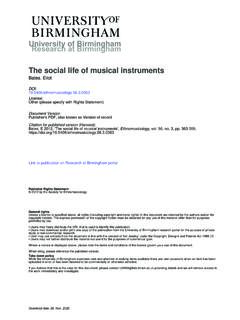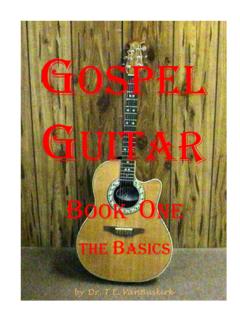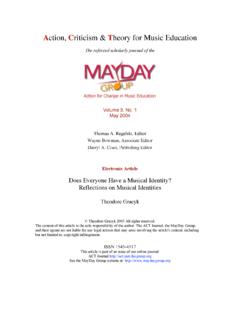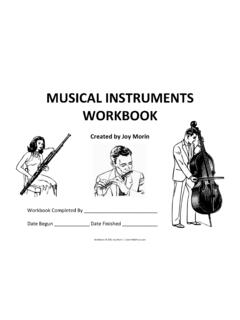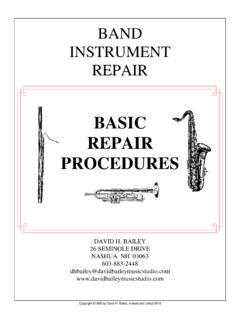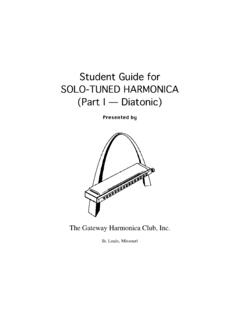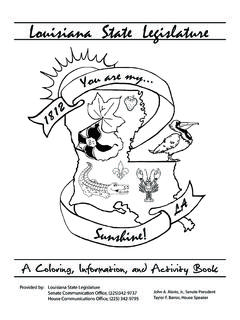Transcription of SITAR MAKING IN INDIA
1 SITAR MAKING . IN INDIA . DOCUMENTATION OF AN APPRENTICESHIP. IN THE SHOP OF. KARTAR CHAND SHARMA. JAN-NOV 1987. PART 1: INTRODUCTION & OVERVIEW . ARTICLE ORIGINALLY PUBLISHED IN THE. JOURNAL of THE GUILD of AMERICAN LUTHIERS. NUMBER 67 / FALL 2002. BY. JAY SCOTT HACKLEMAN. SITAR MAKING in INDIA One Shop's Tradition By Jay Scott Hackleman n 1987 I spent almost a year in INDIA on a grant from built every step of the way with hand tools, by hands I the American Institute of Indian Studies (AIIS), a program partly funded by the Smithsonian. The objective of the trip in the words of the proposal was to perfect skills as an instrument maker through traditional taught by their fathers and their fathers before. On the first day, I showed up soon after dawn with a blank notebook (first of eventually 5) and a little box of Indian sweets,' which was the only thing Kartar means, and to supply a body of information for other Chand had requested I bring.
2 I assumed it was like craftsmen through documentation. The name of the bringing a box of donuts to work or something, so I. proposal was musical Instrument MAKING in INDIA : handed them to him expecting to dig in. But that wasn't Documentation of an Appreticeship. I guess this project the case. The sweets were not just for us. Before we could might not be accurately referred to as an apprenticeship.' have any, they were first shared with Vishkarma--the god If it were truly an apprenticeship I would have had to first of the craftsman. Some incense was lit and a few fresh start by selecting an appropriate instrument maker, and flowers were on hand. After a few pieces were laid in front then arrange to be born as his son. But with this singular of the picture of Vishkarma, Kaka was sent for some chai, disadvantage in mind, I endeavored to learn what I may and then we had our little treats.
3 That was that. The through the means of observation and personal beginning of a long commitment, based only on trust and a involvement. Personal involvement only possible due to reverence for craft and tradition. the generosity of my instrument maker guru Kartar Chand. In Kartar Chand's shop instruments were only It was Ravi Shankar who got me to New Delhi made when someone ordered one, and they were booked and it was pure serendipity that led me to my teacher, the many months in advance with orders. Nothing was built late Kartar Chand Sharma. Serendipity permeates the air on speculation, contracted out, or mass produced. Many of INDIA like incense and the fortunate string of shops still have a close circumstances leading to our meeting could not have put tie to their village craft me in a more wonderful position -- allowing me to watch roots; the instruments and learn from this skilled, honest, straightforward man, a they make are what master of the old tradition, his brother Hari, and their might be called folk apprentice Kaka (his nickname because his name is Kartar instruments .)
4 A few Chand also) in their old and respected shop in Pahar Ganj shops, like Kartar (Old Delhi). Chand's, have been There were many times I felt that, when leaving attending to the needs my room in New Delhi and hailing a three wheel taxi- of professional or scooter early each morning, that the scooter was instead a classical musicians, and black and yellow time machine, taking me not just to thereby have developed Pahar Ganj but to a small shop that could have just as well a more refined been in the 18th century. A shop where instruments are technique. Of course there are many shops which produce mostly with the tourist trade in mind. I hope this article can shed some light on evaluating a good SITAR from one that is mostly just decorative, or worse. Spending the better part of a year in Kartar Chand's shop exposed me to the full gamut of traditional classical Outside the shop of musical instrument J.
5 S. Hackleman and Kartar Chand Sharma Kartar Chand /Hari Chand his contacts, I travelled to Pandharpur, in Maharashtra (way off the beaten path), where the best gourds come from. He also recommended that I spend some time in Calcutta where there are numerous old and respected instrument maker shops, specifically Kanai Lal, Hiren Roy, Naskar, Hemen and Radha Krishna Sharma. Over all I spent two months in Calcutta. One of the first field trips I took with my teacher was to Kirti Nagar in Delhi, the location of the government timber yards where there are acres of huge logs of tun, teak, and sheeshum. Among all these logs are various small mills, with one of which Kartar Chand had a good working relationship. The wood he works with is Tunwood (Cedrela Toona). Most sitars are made of Tun. It's used in cigar boxes and pencils as well.
6 There are some makers who have been asked to build sitars from teak, but I'll Kartar Chand supervising milling of a Tun log. return to that subject later. The logs Kartar Chand chose MAKING -- everything from selection of raw materials, were of sufficient size for some of the larger components seasoning of the different parts, construction of SITAR , needed for surbahar (a bass SITAR ) and gentleman's tambura, dilruba, surbahar -- all manner of repair -- (there tambura, as well as the usual shop stock for gulus, tablis was one SITAR that had fallen out of a moving car, other one and dhandhis. The illustration at the bottom of the page where the neck was bowed a good 2 inches) but my main shows the stock dimensions for SITAR . (The illustrations for source of interest and of course the instrument they made this article are scanned from my notebooks from INDIA .)
7 The most of, was the SITAR -- from basic student sitars to very elaborate professional sitars. What will be covered in these articles will just deal with the SITAR -- the process of building as I observed it in the course of my time with Kartar Chand. What I want to share in this article is more along the lines of introductory and anecdotal peppered with a little practical information, so as to shed some light on an old tradition of instrument MAKING . I hope that if the opportunity presents itself, I could get into more detail on SITAR construction later. My proposal called for me to apprentice with an instrument maker to study this craft where it is still a living tradition,' and to document techniques, tools and raw materials used in the process. With this in mind I. accompanied the guru to the huge wholesale lumber yards at the edge of New Delhi, and on his advice and through Hari sorting through the shop's supply of seasoned components Besides the use of Tunwood in the main structure of the instrument, there is also the use of a tumba (gourd).
8 For the resonant body. The consensus among instrument builders is that the best tumbas come from Pandharpur. Pandharpur is a small town, famous for its ancient temple, along the banks of the Bhima River high on the Maharashtra plateau. Kartar Chand arranged the introduc- tions to Ms. Haribau Govind Puli, the tumba merchant from whom he got his gourds, so my wife and I headed for Pandharpur. The character of the climate and the regular flooding of the river after monsoon makes for ideal conditions for growing the kinds of gourds best for these instruments : not too thin and flimsy, or too thick and pulpy, or too dense and heavy. The skin is smooth and symmetrical, with no ridges and a minimum of flaws. Also, the type of gourds from here are of a large size. Other than Pandharpur, the most important place to visit was Calcutta.
9 Calcutta has most of the really old established shops. I was fortunate to have been able to interview Hiren Roy and his son Himangshu (who have now both passed away), and was very fortunate to spend a lot of time with Murari Adhikari, who is the Kanai Lal builder. It was this shop that built Ravi Shankar's earlier instruments , on which Nodhu Mulik later based the instrument he built for Ravi-ji. Murari also shed some light on the use of teak in Gourds in Pandharpur bundled and ready for shipping. some instruments . He told me that Kanai Lal, a couple of generations ago, had acquired a significant amount of Interviewing Hiren and Himangshu Roy at their shop in Calcutta At the Kanai Lal shop in Calcutta discussing rudra veena and SITAR MAKING with Murari Adhikari. salvage wood from demolished structures in Calcutta. Upon my return from Calcutta, Kartar and Hari were busy These were very old buildings made of teak that had in the building of a surbahar, and getting ready to start on seasoned for well over 100 years.
10 Many of the instruments another full SITAR .' This would be a SITAR with a full made by this shop over the years were made from this complement of taraf (sympathetic strings), a second stash. Murari said it was resonating gourd, and full beautiful old-growth fancy carving and engrav- Burma teak, which is quite ing. different from the CP teak' By now I had observed found today (CP = central the construction of quite a province). The grain was few sitars, and had devised very straight and even, and what I felt was a good list much lighter than CP teak. of the steps in building a The SITAR made for Ravi SITAR . This would give me a Shankar was made with chance to check my notes, this salvage wood. He said and I was looking forward the usual wood for musical to lending a hand. instruments is Tun, but Much of this because of the notoriety information is more that instrument and the one appropriately expressed in Nodhu made acquired, it terms of principles rather was assumed by those in than formulas, and the west that all sitars were proportions rather than made of teak.

